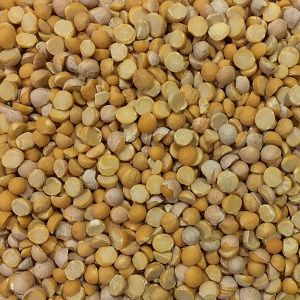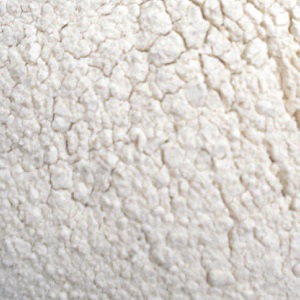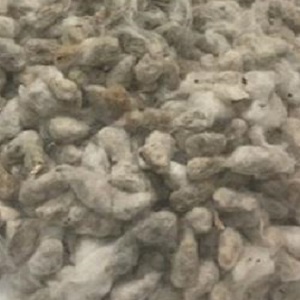Description
Chickpeas serve as an energy and protein source as animal feed.
Raw chickpeas have a lower trypsin and chymotrypsin inhibitor content than peas, common beans, and soybeans. This leads to higher nutrition values and fewer digestive problems in nonruminants. Nonruminant diets can be completed with 200 g/kg of raw chickpeas to promote egg production and growth of birds and pigs. Higher amounts can be used when chickpeas are treated with heat.
Experiments have shown that ruminants grow equally well and produce an equal amount and quality of milk when soybean or cereal meals are replaced with chickpeas. Pigs show the same performance, but growing pigs experience a negative effect of raw chickpea feed; extruded chickpeas can increase performance even in growing pigs. In poultry diet experiments with untreated chickpeas, only young broilers (starting period) showed worse performance. Fish performed equally well when their soybean or cereal diet was replaced by extruded chickpeas.
Secondary components of legumes — such as lecithin, polyphenols, oligosaccharides, and amylase, protease, trypsin and chymotrypsin inhibitors — can lead to lower nutrient availability, thus to negative effects in growth and health of animals (especially in nonruminants). Ruminants have generally less problems to digest legumes with secondary components, since they can inactivate them in the rumen liquor. Their diets can be supplemented by 300 g/kg or more raw chickpea seeds. However, protein digestibility and energy availability can be improved through treatments, such as germination, dehulling, and heat. Extrusion is a very good heat technique to destroy secondary components in legumes, since the proteins are irreversibly denatured. Overprocessing may decrease the nutritional value; extrusion leads to losses in minerals and vitamins, while dry heating does not change the chemical composition.
Chickpea seeds have a relatively high protein and starch content and are mainly used as a concentrate, replacing soybean meal and cereal grains. The antinutritional factors in chickpea seeds were inactivated by 12-24 h of in vitro incubation with rumen liquor, and subsequently did not have a substantive effect on nutrient absorption from the small intestine of sheep (Bampidis et al., 2011).
Digestibility and rumen degradability
In sheep, estimates of OM digestibility of chickpeas were comprised between 84% (Hadjipanayiotou et al., 1985) and 92% (Bampidis et al., 2011), while energy and protein digestibility were both about 79% (Hadjipanayiotou et al., 1985). Replacing soybean meal and cereal grains by chickpea seeds in heifer, steer or lamb diets improved the apparent digestibility of crude protein and crude fat, with no adverse effect on the digestibilities of DM, fibre and energy (Hadjipanayiotou, 2002; Sommerfeldt et al., 1988; Illg et al., 1987). However, no improvement in digestibility was observed when replacing mixtures of maize grain and rapeseed meal, field peas or lentils by chickpeas in steer diets (Gilbery et al., 2007).
In growing heifers, steers and lactating cows, rumen protein degradability increased with the inclusion rate of chickpeas in replacement of soybean meal and cereal grains (Hadsell et al., 1988; Sommerfeldt et al., 1988; Illg et al., 1987). Rumen ammonia, in steers, was reported to increase with the dietary level of chickpeas in place of soybean meal and cereal grain (Gilbery et al., 2007). The effective rumen protein degradability of chickpea is comprised between 59% (ewes) and 75% (non-lactating Holstein cows) (Bampidis et al., 2011).
Lactating ruminants
In lactating cows, chickpeas can be used as a substitute for soybean meal and maize grain up to 50% (DM basis) of the concentrate, or 25% (DM basis) of the whole diet. Milk protein content decreased at higher inclusion rates, though milk yield and milk fat contents increased (+ 1.2 kg milk/d). The increase in milk yield and fat content with high inclusion rates has been attributed to the relatively high fat content of chickpeas (Hadsell et al., 1988). In lactating ewes, no effect of replacing soybean meal and cereal grains with chickpeas, up to 30% (DM basis) of the concentrates, was observed on milk yield, and milk content of fat, protein, lactose and minerals (Christodoulou et al., 2005; Bampidis et al., 2011).
Growing ruminants
In growing cattle, substitution of mixtures of soybean meal, rapeseed meal and cereal grains by chickpeas resulted in higher body weight gains (Illg et al., 1987; Gilbery et al., 2007). In Holstein heifers fed a diet containing 50% of grass hay (DM basis), body weight gain was optimal when chickpeas were included at 25 to 49% of the concentrate (DM basis). Increasing chickpea inclusion rate (from 0% to 75% of concentrate DM) resulted in a linear decrease in DM intake and feed conversion efficiency (Illg et al., 1987).
In lambs and kids, the replacement of soybean meal and cereal grains with chickpeas did not affect body weight gain, intake or feed conversion ratio as long as the inclusion rate of chickpeas did not exceed 42% of the dietary DM (Hadjipanayiotou, 2002; Bampidis et al., 2011). Similarly, partial or total replacement of soybean meal and cereal grains with chickpeas did not affect carcass weight, yield, or the physical and chemical characteristics of the longissimus dorsi muscle (Lanza et al., 2003; Christodoulou et al., 2005).
Pigs
Chickpeas, in spite of their trypsin inhibitor content, are a valuable energy and protein source for pigs and are used to replace soybean meal in the diets. They can be fed raw, dehulled, cooked or extruded (Christodoulou et al., 2006b: Singh et al., 2005; Batterham et al., 1993). True ileal digestibility of all amino acids is similar to that of soybeans (full-fat or soybean meal) (Rubio, 2005; Singh et al., 2005). The ileal digestibility of chickpea starch was reported high (85%) in Iberian pigs (Rubio et al., 2005).
Raw chickpeas
Results on the use of raw chickpeas in pigs are contradictory. Inclusion of up to 75% raw chickpeas (from low fibre varieties or dehulled) replacing soybean meal was found to have no adverse effect on daily gain, feed intake and feed efficiency in growing pigs. Furthermore, pigs tolerated the trypsin and chymotrypsin inhibitors of the chickpeas and showed no sign of organ toxicity (Batterham et al., 1993). In another trial, raw chickpeas fed to growing and finishing pigs at 30% of the dietary DM gave a similar body weight gain, feed intake and feed conversion ratio as soybean meal over the whole period (growing and finishing) (Mustafa et al., 2000). Chickpeas included at 10-20%, 26%, and in one study 75% of the diet DM, had no effect on carcass yield, percentage of lean meat and overall meat quality (Pennisi et al., 1994; Batterham et al., 1993; Visitpanich et al., 1985). However, during the growing period, pigs fed 30% raw chickpeas had lower performance (Mustafa et al., 2000). However, in another experiment during the finishing phase, 10% raw chickpeas negatively influenced weight gain and feed conversion ratio compared to the soybean meal diet (Christodoulou et al., 2006b).
Extruded chickpeas
Extruded chickpeas included at up to 30%, in the diets of growing and finishing pigs, fully replaced the soybean meal with positive effects on body weight gain and feed conversion ratio (Christodoulou et al., 2006b), and with no effect on meat quality (Christodoulou et al., 2006d). The positive effect of extrusion may be due to the improved utilization of starch, fat and protein of extruded chickpeas by the pigs (Bampidis et al., 2011).
Poultry
The digestibility and biological value for poultry of chickpea nutrients are high (Brenes et al., 2008; Nalle, 2009). However, due to the presence of antinutritional factors, raw chickpeas have been reported to increase pancreas weight in growth trials, which may indicate some toxicity (Farrell et al., 1999; Viveros et al., 2001).
Broilers
Some experiments in young animals have reported decreased growth when raw chickpeas were introduced at moderate inclusion rates as low as 10% (Brenes et al., 2008; Farrell et al., 1999). In older animals, the inclusion of raw chickpeas led to decreased growth performance and an increased feed conversion ratio when used at rates above 15-20% (Christodoulou et al., 2006a; Viveros et al., 2001). In slow growing organically reared broilers, growth, but not feed efficiency, was degraded by high levels of chickpeas fed without amino acid supplementation (Katogianni et al., 2008)
Treatment of chickpeas has improved animal performance. The positive effect of thermal treatments such as pelleting or autoclaving has been reported by several authors (Farrell et al., 1999; Christodoulou et al., 2006a; Viveros et al., 2001). Extrusion allowed up to 20% chickpeas in diets for young broilers, whereas raw chickpeas reduced performance (Brenes et al., 2008). In turkeys, 20% extruded chickpeas did not reduce performance, and extreme inclusion rates, up to 80% chickpeas resulted in a reduction of only 8% in growth (Christodoulou et al., 2006b).
The recommendation is to limit chickpeas to 5-10% in starter diets and to 10-15% of DM in grower and finisher diets. Higher levels could be used with heat-processed chickpeas.
Layers
Inclusion rates of chickpeas as high as 25 to 40% in layer diets were shown to maintain egg production (Garsen et al., 2007; Perez-Maldonado et al., 1999). However, other experiments showed a trend to lower performance at levels above 20%. Dehulling chickpeas, or applying thermal treatments such as pelleting did not change the laying rate but improved layer body weight (Robinson et al., 2001). When used as a substitute for maize grain, chickpeas may decrease egg yolk color, which has to be considered in feed formulation (Garsen et al., 2007). It can be recommended to use chickpeas at up to 20% in layer diets provided that the diet is well balanced (notably for methionine).
Fish
With high carbohydrate and fat content, chickpea seeds are potential good sources of energy, and to a lesser extent protein, for fish feeding. However, their trypsin and chymotrypsin inhibitors may impair their feeding value for fish (Tacon, 1993).





Reviews
There are no reviews yet.